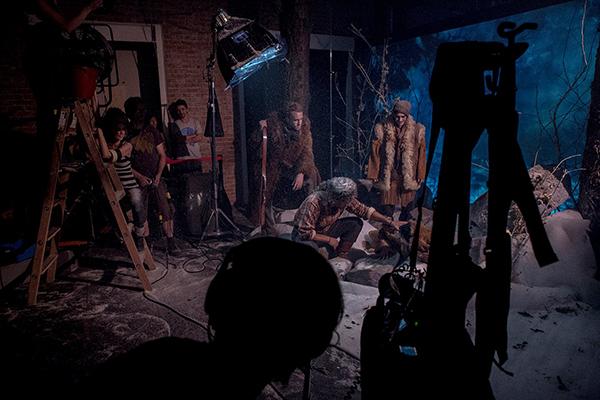In ‘The Forbidden Room,’ even surreal nightmares become repetitive

“The Forbidden Room,” directed by Guy Maddin and Evan Johnson, is worth watching for the style that it creates and for a lesson on how this style can fall short.
October 6, 2015
Nothing in “The Forbidden Room” can be taken seriously. Don’t be deceived by the sophisticated dream sequences and “Inception”-like plot development — the film is all flash, no substance. Even the directors, Guy Maddin and Evan Johnson, recognized this, leaving simple instructions: “Stay safe and enjoy.”
“The Forbidden Room” starts out with a short educational clip about bathing properly. Abruptly, the film cuts to a submarine, where a panicked crew faces oxygen deprivation, and one of the crew members takes the opportunity to have a long daydream about a group of mountaineers trying to rescue a woman from a cult. From here on out, the film only takes more twists and turns, refusing to settle down for even a moment of its two hour run. Other scenes include dancing skeletons, a runaway mental patient, a lobotomized doctor and a sculpture of the Roman god Janus.
What these scenes have in common is the way they all seem to be from forgotten second-rate movies, the kind that you might find on Turner Classic Movies at 2 a.m. Both Maddin and Johnson know how to take raw material and make it into something more over-the-top than the original could have imagined, resulting in a tribute to these second-rate movies.
The highlight of the movie is the cinematography. Shot by Benjamin Kasulke, Stephanie Anne Weber and Weber Biron, the film is mesmerizingly colorful. Many recent movies have tried to capture the look of directors in the age of Technicolor, but few have gone all the way back to Sergei Eisenstein and D.W. Griffith. The actors of “The Forbidden Room” are lit so much that they look like holograms. The sets make no attempt at reality, going instead for a greatly exaggerated theatrical feel.
For about an hour, the movie is a joy to watch. It captures what is fun about corny old movies so well that the absence of traditional plot and characters is not really felt. But after a while, this energy runs out. The viewer becomes acclimated to this style, so the shock factor wears off and the film begins to feel repetitive. In one scene a mother holds her child at gunpoint and in another a mad scientist has his wedding gift rejected by a bride on her wedding day. These and most other scenes in the movie have no real jokes built in except that they are exaggerated versions of something that might happen in an old movie. This is not enough to keep the film consistently entertaining. Without character development, and with the novelty of the style exhausted, the movie has to rely on pure humor. This is bad news, because as comedy goes it is pretty mediocre.
“The Forbidden Room,” like many recent arthouse movies, makes broad lewd jokes. These jokes play on the irony of their own lack of real comedy that they are clearly meant ironically. This style is frustrating, because it takes so little real effort. One scene features a long musical number about a skeleton orgy.
All in all, “The Forbidden Room” is well worth watching, both for the style that it creates and for a lesson on how this style of abstract modernism can fall short.
“The Forbidden Room” will be released Oct. 7.
Email Tony Schwab at [email protected].











































































































































